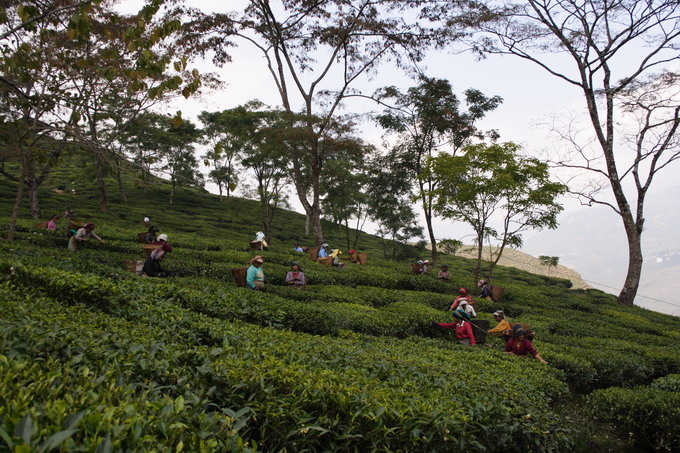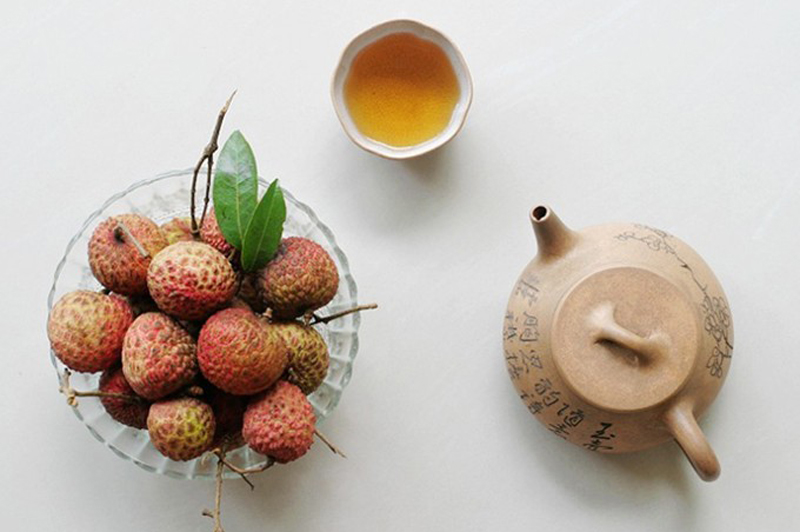Comparison of different flavors of tea picked in spring, summer, rainy season and autumn between Darjeeling and Assam in India
terrain
Darjeeling and Assam are very different tea producing areas. The Assam tea region is at a lower elevation, while the Darjeeling tea region is close to the Himalayas and has a higher elevation.
climate
Assam has a warmer climate and shorter winters, while summers last longer and, in the summer season, rain is abundant and the air is humid. These conditions are very suitable for the growth of plants, which is why the main tea producing areas are concentrated in Assam.
Darjeeling region, its tea planting area is smaller than Assam, the temperature is lower, and the planting conditions are more severe.
Assam produces more tea than Darjeeling. Darjeeling tea production is relatively small, but Darjeeling tea quality, flavor, aroma completely above Assam tea.

picking
Tea picking is determined by the local region and, more specifically, by the current local season and the current seasonal microclimate. The timing of green picking is very important. It takes only a few days for the top buds of tea tree branches to sprout from the unopened surface to the small open surface to the middle open surface to the large open surface. This affects the aroma and taste of the tea.
Assam has only two harvesting seasons.
Spring Harvest: Beginning in March. This season's mature tea has aromatic, fresh, floral characteristics, tea soup presents attractive golden color.
Summer picking: May starts and June ends. This season's Assam tea is considered to be the best quality Assam tea, and its tea contains more gold buds. This season's tea has a special spice flavor, malt aroma, its tea soup presents a red copper color or brown.
Darjeeling has four tea seasons.
Spring Harvest: March begins until April. When the leaves are tender, they are picked and grow on the stems of tea trees, called buds. The tea was delicate, with a faint floral aroma. This tea polyphenol content is high, because of winter weather and astringent taste. This tea is generally less oxidized during processing and looks greener than most black teas.
Summer pick: produced in May and June, mellow taste, ripe, fruity. The distinctive musky grape flavor begins to dominate, and the finished tea presents a stronger, smoother character. Most Darjeeling teas on the market are summer-picked and usually do not have such labels because tea from other seasons is rarely sold.
Seasonal: Monsoon black tea is harvested in September after heavy rains in the region and is a strong, darker tea. Heavy rain and extreme heat prompted the leaves to grow quickly, but the same speed and "easy growing conditions" resulted in a softer flavor. "Monsoon Darjeeling" is usually used for iced tea or tea bags.
Autumn harvest: October and November harvest leaves are large, producing a strong natural fruity tea. Autumn teas are usually rich and smooth, with nutty, sometimes woody features, which are markedly different from the lightness of the first brew.
Important Notice :
前街咖啡 FrontStreet Coffee has moved to new addredd:
FrontStreet Coffee Address: 315,Donghua East Road,GuangZhou
Tel:020 38364473
- Prev

Starbucks and Amazon have joined forces to create a new concept coffee shop! Use Amazon Go technology, no cashier, no queue!
Amazon and Starbucks are in talks to launch a joint-brand coffee shop that will develop a new concept coffee shop that will inherit AmazonGo technology and become a cashier-free smart coffee shop, according to INSIDER (insider). Everyone should know about Amazon.
- Next

Litchi black tea belongs to seasoned tea. did you add flavor to the tea? How is litchi black tea made?
Litchi black tea this attractive sweetness and fruit Fairtrade certified litchi black tea is one of the traditional black teas in China. Litchi black tea is usually smoked with litchi peel and / or flowers and seasoned with litchi fruit extract to get the best taste. Litchi, native to Asia, is a small, round pink.
Related
- A complete list of coffee bean names and their meanings! What is Yejia Shefi coffee? Where is Mantelin coffee?
- What grade does Arida Manor Kaduai coffee beans belong to? What treatment is Arida ASD slow anaerobic sun exposure?
- The milk tea cup becomes smaller?! Overlord Tea Girl launches a new "Return to Yunnan" series
- Accused of selling counterfeit and high-priced coffee beans! Well-known boutique coffee brand "Oukelao" bowed and apologized!
- How to make espresso dumplings? Can I eat coffee and glutinous rice balls together?
- Save the unformed and stagnant powder cakes in one second! What is the problem with stagnant water in the powder bowl of the espresso machine?
- What does hand-brewed coffee stop mean? Why is it not recommended to make coffee by hand?
- Is it normal to smell like coffee? Why does coffee smell like alcohol? What's wrong with the strong smell of cold extract ice dripping ice brewed coffee?
- How to solve the problem that hand-brewed coffee extraction takes too long? Why is the water flowing so slowly when making coffee?
- The main points of making Australian white coffee, the proportion details, how does Australian white properly foam and blend the flowers?

